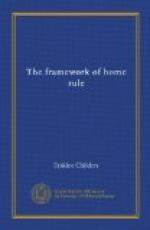The phases through which the agitation passed before it reached this disastrous point need only a brief review. Naturally enough, owing to the bi-racial conditions, friction had arisen earlier in Lower than in Upper Canada, yet the first recognition of the flagrant defects of the Constitution was not made till 1828, when a Committee of the British House of Commons published a Report which, though its recommendations were mild and inadequate, was in effect a censure of the whole political system of the Province and an admission of the justice of the agitation. There was no result for four years, while matters went from bad to worse in the Colony. At last, in 1832, under an Act similar to that passed for Upper Canada, all the provincial revenues were placed under the control of the Assembly in return for the voting of a fixed Civil List. This well-meant half-measure made matters worse, because it left the Assembly just as powerless as before over the details of legislation and administration, while giving it the power to paralyze the Government by refusing all, instead of only part, of the supplies. This it proceeded to do, and in the next five years large deficits were piled up, and the Colony became insolvent.
Meanwhile, in February, 1834, a year before the publication of the “Seventh Report of Grievances” in Upper Canada, and three months before O’Connell’s celebrated motion in the House of Commons for the Repeal of the Union between England and Ireland, the Assembly of Lower Canada, at Papineau’s instance, passed the equally celebrated “Ninety-two Resolutions.” Bombastic and diffuse, like parts of O’Connell’s speech, this historic document nevertheless was as true in all really essential respects as Mackenzie’s manifesto and as O’Connell’s tremendous indictment of the system of Government in Ireland. All three men, O’Connell with far the most justification, demanded the same thing, good government for their respective countries under a responsible Parliament and Ministry. They all occasionally used wild language, O’Connell the least wild. O’Connell, who nine years later deliberately quenched a popular revolt he could have headed, failed in his aim as completely as Tone, Emmett, and Smith O’Brien, who pressed their efforts to the point of violence. Mackenzie and Papineau, who took to arms, succeeded in their aim.




